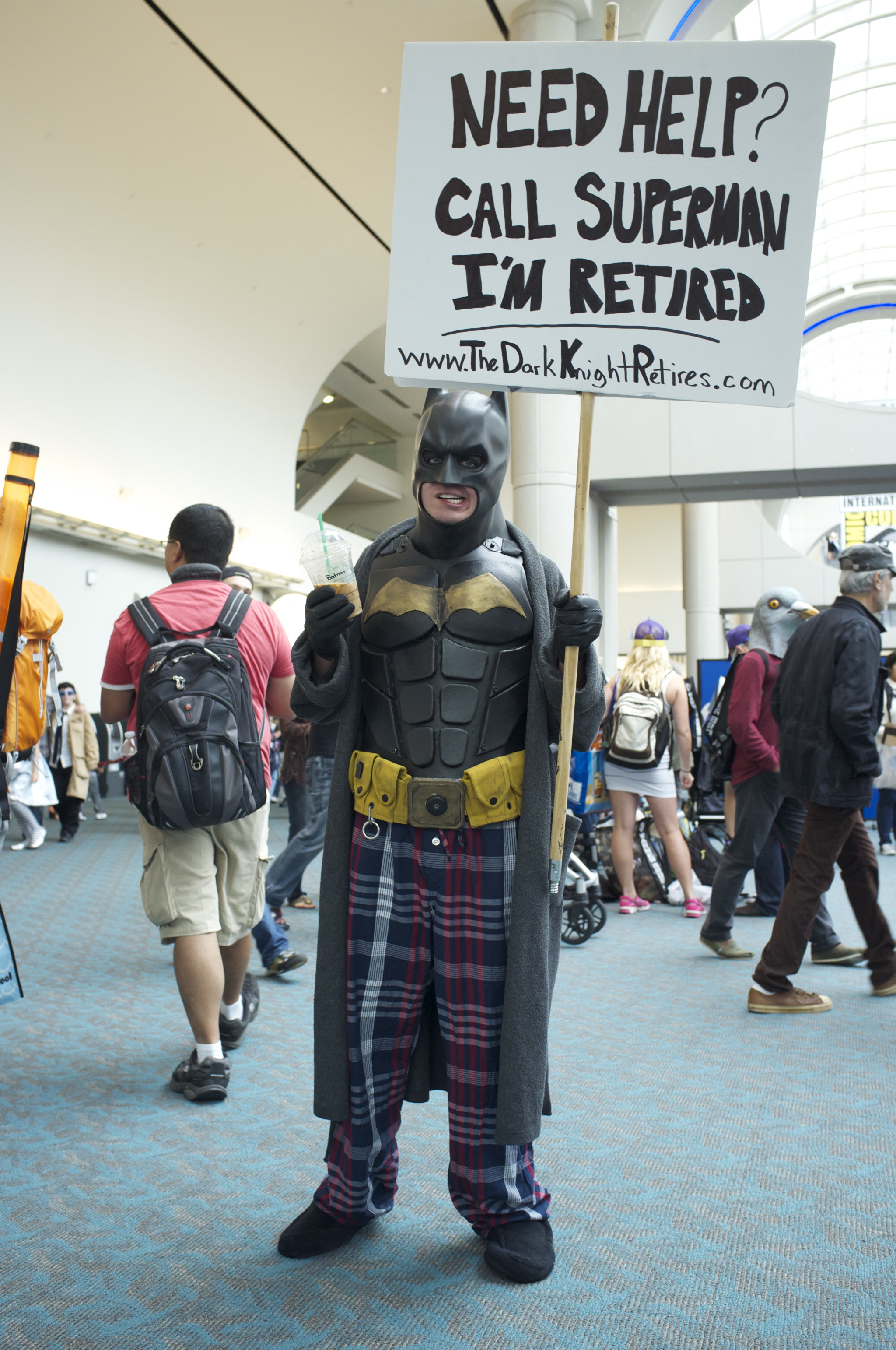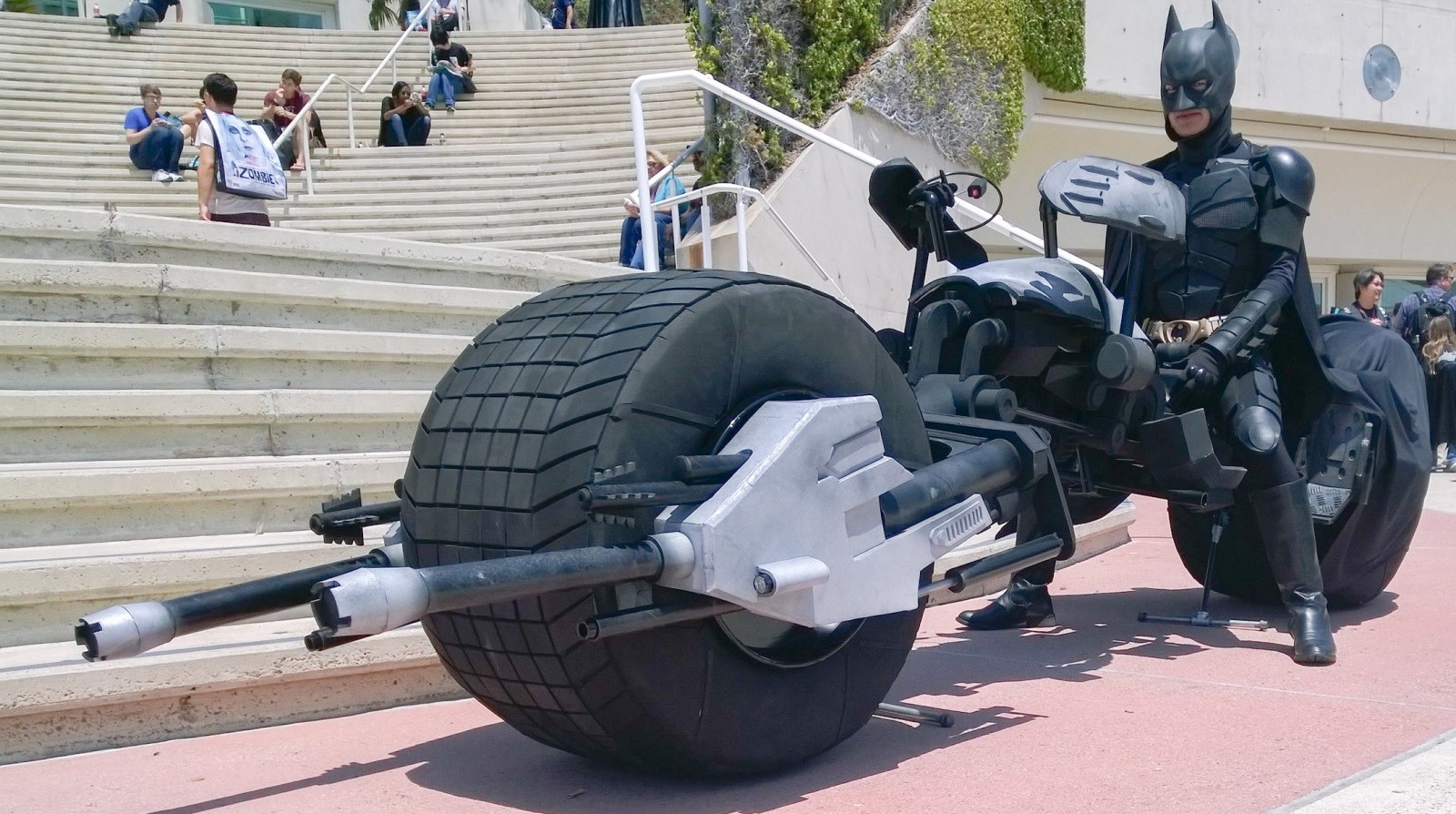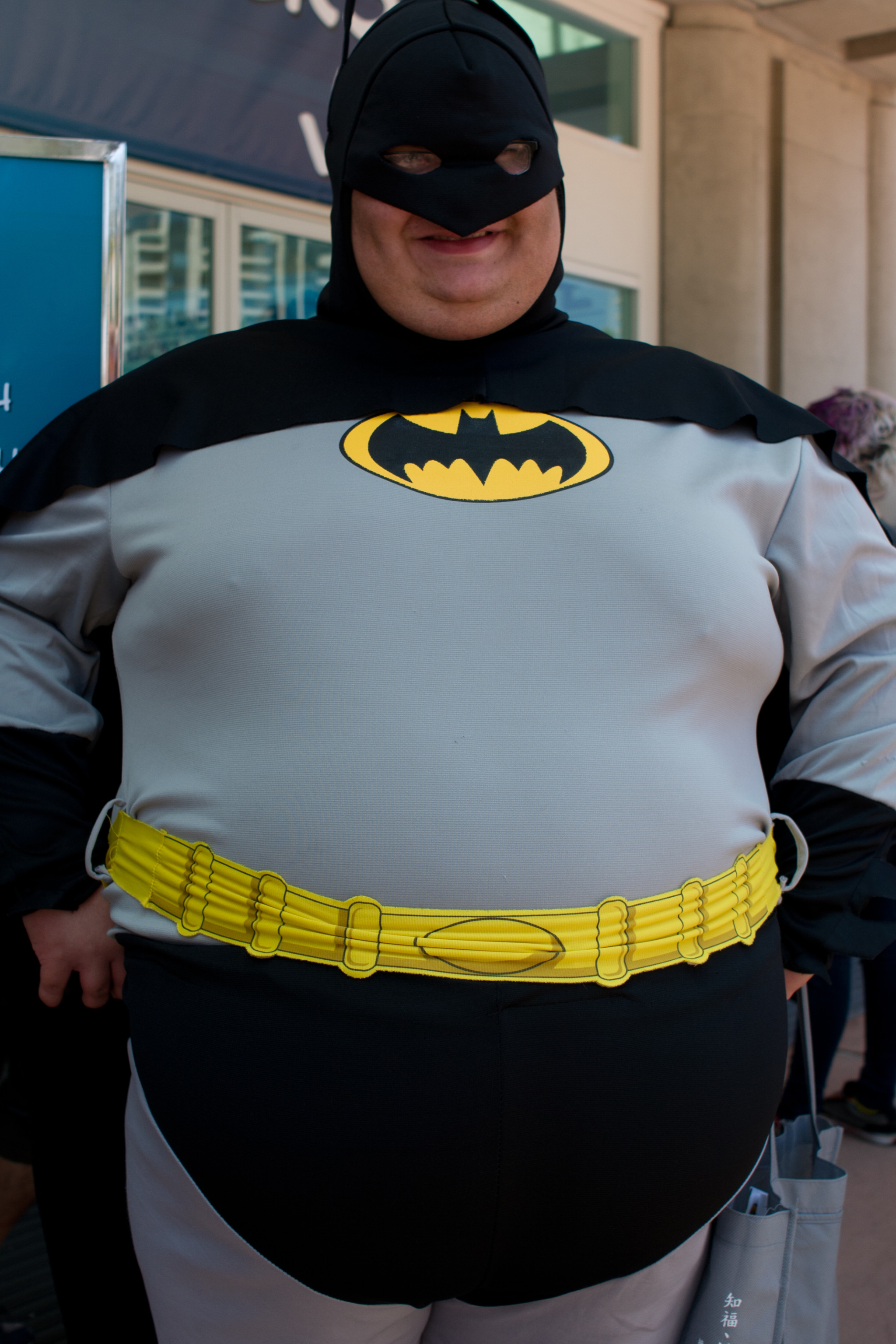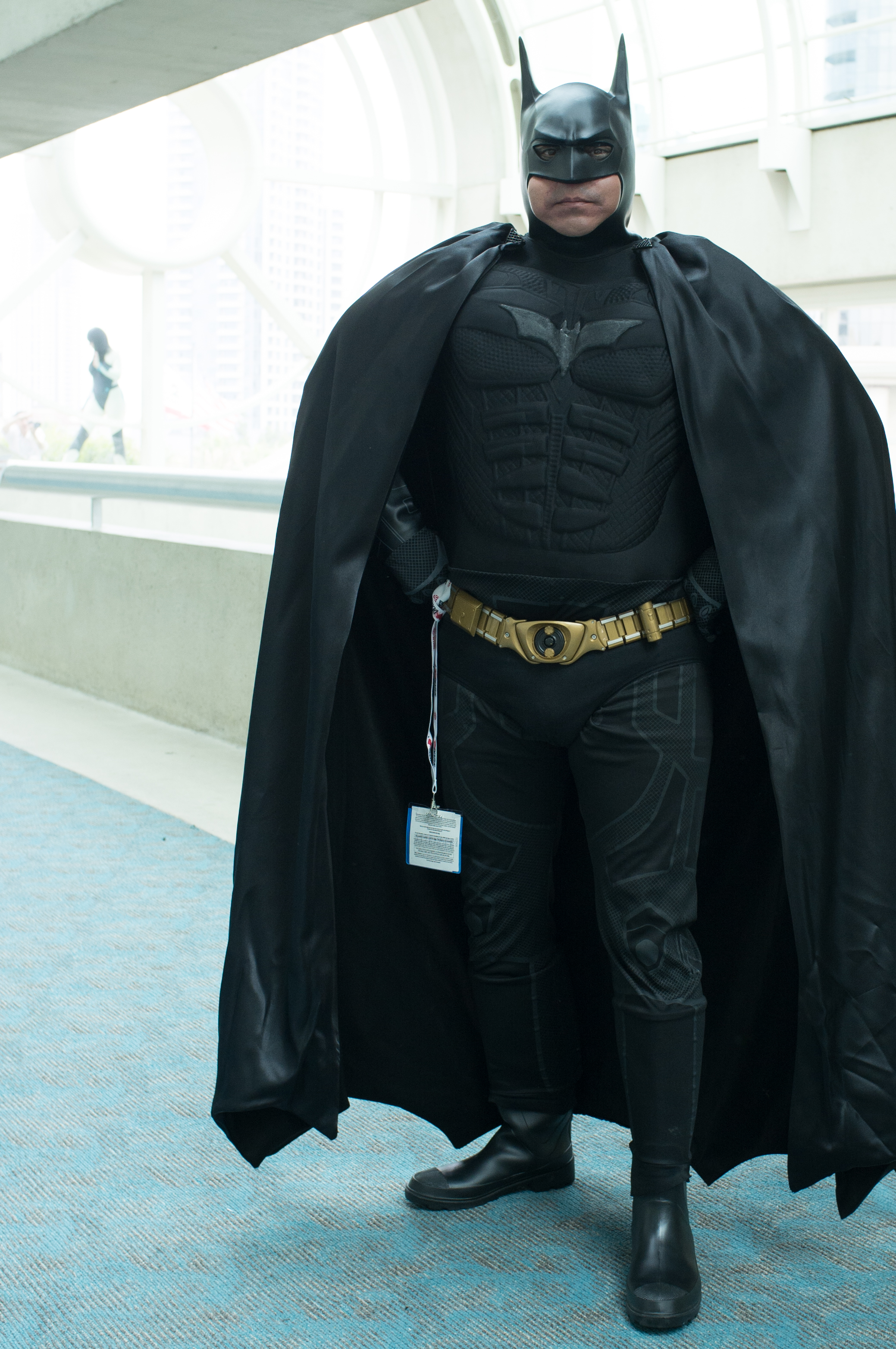For San Diego Comic-Con 2015, I am required to reverify my press status—the second time since starting to attend as news media in 2009. I submitted the required documents and story links in early December 2014 and now anxiously await my SDCC fate. If denied, I will unlikely attend this year’s Con, having missed other opportunities to register. If that happens, the world won’t end. Life will go forward. But my birthday, which occurs during the July 9-12 dates, will be somewhat sorrowful this year.
I love Comic-Con for what it represents: Storytelling and attendees being or associating with the people they wish they could be. I laid out my thoughts on the latter concept in July 2010 post “The Roles We Play“, which I adapted as the introduction to my 2013 event project: Comic-Con Heroes: The Fans Who Make the Greatest Show on Earth. I had much hope for the ebook, when published about 18 months ago. But sales were never good—and as distance grows greater from the events told, time diminishes the content’s value.
“Comic-Con Heroes” is a collection of profiles. Twelve attendees. The people whom I believe are the real stars of the show. Not Hollywood, which presence feels larger every year. As I write in the book’s opening section: “While many Conners role-play fictional characters or superheroes, fans of every ilk play the most important role of all. They are Comic-Con. But no one tells their stories. I want to change that”.
So I told a dozen stories, which few people read. 🙁 Really disheartening: I bumped into one of the profilees, Andrew Elkins, during Comic-Con 2014. “Last year I interviewed you for my book”, I said. He gave curt acknowledgment that implied: “Get the frak away from me!” Apparently, my profile didn’t impress Andrew much, and I must say that only a few of the other 11 commented at all after receiving a copy of the book.
Storytelling is an art, and I wonder how effective was mine in “Comic-Con Heroes”, given the response, or lack of it. With SDCC on my mind, as it will be many other people’s over the coming months, today I begin to serialize the book—one profile each Saturday, plus the epilogue (of which I am rather proud). When finished On July 8, 2015, after my current commitment for Amazon KDP Select ends, I will put the book into the public domain, making it freely available to anyone.
With that introduction, let’s meet The Dark Knight.
Ken Camarillo is a big man. He towers so high over me, dressed as The Dark Knight, my neck hurts from careening upward. He is an imposing figure in costume, and I haven’t seen him otherwise.
Yet Camarillo’s voice is clear, confident and not-the-least threatening—nor is his casual posture. Isn’t that how Batman should be to the everyday citizen?
We meet early Day 2 on the upper level near several rooms where panels are already underway.

I ask Camarillo why he comes to Comic-Con, his fourth year. “It’s the pop culture, to stay current. Partially, it’s something we love—the characters, just the atmosphere of people dressing up and learning about different things on the horizon, as far as pop culture goes”.
Knowledge@Wharton, University of Pennsylvania’s online business journal, calls San Diego Comic-Con the “Super Bowl of pop culture“. “It’s simply the place to be for anyone interested in comic books, video games, and science fiction movies, television and literature”.
Camarillo gives the pat response, what someone is supposed to say. But the event means something more to him. Comic-Con is a sentimental journey. A pilgrimage.
“There’s a sentimental aspect”, he says. “My wife’s parents, her dad specifically, dressed up and really got into events and holidays”. The man never attended Comic-Con. “But to help her keep going, to keep that spirit alive, we dress up. It’s part of our family tradition”.
His wife, who attends one of the Con’s many panel sessions while we talk, is Batwoman. The couple wore the same costumes last year, but may go “as Catwoman, Indiana Jones, or some such character” next time. That”s not to say their repertoire is so limited; the Camarillos dress up often. They have been pirates and zombies, among other characters.

“I’m waiting for the graphic novel, where it’s Batman the zombie”, I tell him. We both agree such scenario is easily plausible, given Batman (aka Bruce Wayne) isn’t the superhero imbued with natural powers, but the all-too-human gadget-carrying vigilante. If Batman ever met The Walking Dead, once bitten, he could turn zombie.
Imagine a Justice League of zombies.
I ask Camarillo why people dress up. I contend that for as many days as they attend, there is opportunity for cosplayers to be who they would prefer to be. “People aspire to core values”, he answers. “I think that’s part of who they are. There’s certain expression of that”.
What about real life—his real job? “I’m a sales trainer, and I actually try to help people understand telematics in vehicles. So I get to push a lot of the technologies in vehicles—like a Batmobile”. The irony is rich.
The Camarillos are among just two of the many “Bat people” that I see at Comic-Con. The characters are everywhere—from cartoon to television to movie renditions. Batman, Caped Crusader, and The Dark Knight are among his many names. His nemeses, principally the Joker, are nearly as plentiful around the Con.
Comic-book artist Bob Kane and writer Bill Finger co-created “The Bat-Man”, who first appeared in Detective Comics #27, May 1939. The character got his own comic book the following year.

His role is unique compared to, say, Superman. “Batman is proof you don’t need superpowers to be a superhero—and the poster boy for what a bad childhood can do to you”, according to his DC Comics bio. By day, he is billionaire businessman playboy Bruce Wayne; by night, he is Gotham City’s winged vigilante avenger.
I wonder if Batman’s broad appeal tugs deep at our personal and social psyches:
- With the right training, anyone could assume the role of The Dark Knight. No superpowers are required.
- A street thug killed Wayne’s parents, which for many fans taps into familial fears about loss and desires for justice.
- Then there is primal fear—of bats, which adult Wayne must overcome and embrace. Who can’t relate to that?
Batman also is the tortured soul; he faces internal conflict that so many heroes with superpowers don’t. DC Comics rightly observes that “In his crusade against injustice, two questions always loom: How far will he go to protect the innocent, and will he sacrifice his humanity along the way?” Batman is a very real character, unlike heroes born with special capabilities. He is everyman, and no man. He is us.
But Batman’s identifiability is much broader. In 1949 book The Hero with a Thousand Faces, Joseph Campbell proposes the “archetypal quest theory”. He asserts that we all share a collective unconscious that in literature is expressed as the “hero’s journey”, or Monomyth, which is found in stories across cultures and history.

The journey goes through 17 stages, which are simplified as The Departure, The Initiation, and The Return. During the first phase, the hero reluctantly begins his journey. The second trains and challenges him. The last puts him on the road home to fulfill his destiny. Homer’s The Odyssey is classic example of the hero’s journey.
In popular, modern literature and film, Harry Potter is a good example of the Monomyth. He receives the hero’s “Call to Adventure” but “Refusal of the Call” through the Owl’s letters and the magical removal from his aunt and uncle’s home. The supernatural, or something akin to it, is a crucial element of the Monomyth; magic in this tale. Each part of Harry Potter’s quest reflects the heroic struggles of everyday life—the family (where his cousin is favored), making friends and learning at school; overcoming personal fears (and real monsters); and accomplishing difficult tasks (defeating Lord Voldemort, among them). Harry Potter is an endearing and identifiable character because his struggles are our own.
Bruce Wayne’s journey charts similar heroic, although murkier, course. The story told by the movie trilogy directed by Christopher Nolan—”Batman Begins“, “The Dark Knight” and “The Dark Knight Rises“—follows the basic hero’s journey. Henri Ducard/Ra’s al Ghul calls Wayne to train with the League of Shadows, which the playboy at first rebuffs then answers by fulfilling a task with a blue flower. He trains, developing supernatural-like capabilities, fulfills tasks, and overcomes temptations before returning to fulfill his destiny in Gotham City. The basis of Wayne’s childhood fear becomes the symbol for his role. During the first movie, Wayne tells butler Alfred Pennyworth: “Bats frighten me. It’s time my enemies shared my dread”.
While the hero’s journey traces across the trilogy, the third film follows the path on its own, as middle-school teacher and author C. David Miles aptly explains. There’s something primal to the Batman Monomyth that tugs us, that appeals to anyone.
The trilogy also is a redemption story, where during the third movie Wayne loses everything only to later triumph; he overcomes physical, emotional, and external hardships to reclaim himself as Batman and save Gotham City from nuclear annihilation. Redemption is one of the most common storylines in modern literature and film. The purest redemption story is the fallen hero restored.
